Jeremie Averous's Blog, page 2
March 5, 2022
How Electromagnetic Weapons May Be Decisive in Future Wars
This excellent article ‘‘Revolution in warfare’: Israel has new ‘invisible’ defense system‘ provides useful insight into electromagnetic weapons that aim to destroy the enemy’s electronic systems, which are now so important in all weaponry.
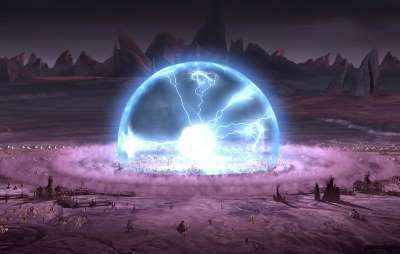
“The weapon, which reportedly can halt electronic capabilities of an enemy, is part of a new suite of electromagnetic warfare called Scorpius. The Scorpius “missiles” send narrowly targeted beams of energy that disrupt enemy electronic sensors, navigation, radar or other electronic activity.” Also, this new weapon is supposedly much more discriminating as “the new Scorpius weapons have an advantage over older forms of electromagnetic warfare because they can send targeted beams without interfering with unintended targets.”
We can also observe this type of weapons to be deployed in the form of drone killing devices. It may be difficult to protect electronics from such weapons if the electromagnetic energy sent is very dense. This has not yet be deployed in major conflicts between technological armies, but could certainly be a game changer in terms of requiring a new generation of reinforced electronics in all weapons to survive electromagnetic aggressions.
Electromagnetic weapons are now operational and will have a significant impact on how future wars may develop, not to mention their potentiel effect on unprotected civilian infrastructure. This is certainly a significant change ahead!
The post How Electromagnetic Weapons May Be Decisive in Future Wars first appeared on The Fourth Revolution Blog.March 3, 2022
How Brains Predict Perception to Save Energy
This exciting article ‘To Be Energy-Efficient, Brains Predict Their Perceptions‘ discusses how “results from neural networks support the idea that brains are “prediction machines” — and that they work that way to conserve energy“. This has wide ranging consequences in perception and how we may be deceived by this predictive trait.

“Many neuroscientists are pivoting to a view of the brain as a “prediction machine.” Through predictive processing, the brain uses its prior knowledge of the world to make inferences or generate hypotheses about the causes of incoming sensory information. Those hypotheses — and not the sensory inputs themselves — give rise to perceptions in our mind’s eye. The more ambiguous the input, the greater the reliance on prior knowledge.”
This results in the development of many models that approximate brain behavior when it comes to perception. Much work has been done on developing neural network models mimicking the brain, and analyzing their energy consumption. “The takeaway is that a neural network that minimizes energy usage will end up implementing some sort of predictive processing — making a case that biological brains are probably doing the same.”
This also explains many effects of visual illusions where the brain unconsciously infers an explanation to the image which may oversee another or be plainly wrong. This well-known phenomenon is also used in psychology to uncover our unconscious by studying what interpretations we spontaneously provide in those situations.
It is not surprising that evolution has found a way to minimise the brain energy consumption, which is already draining a lot of energy for itself. The balance between prediction and actual observation it has found may have made sense in the past, but does it make sense now? How can we exploit it or overcome it depending on the circumstances?
In any case the fact that neural-networks models have been developed of the brain that allow to explain some of its behaviors is a great step forward in understanding at least the perceptual part of the brain.
The post How Brains Predict Perception to Save Energy first appeared on The Fourth Revolution Blog.March 1, 2022
How the Profile of the Richest People Has Changed Over History
This interesting infographics ‘the richest people in history‘ reminds us that throughout most of our human history, the Agricultural Age, the richest people have been the kings, emperors and rulers of vast areas of land. Then, in the 15th century onwards (the start of the Industrial Age) came the time of bankers and merchants.
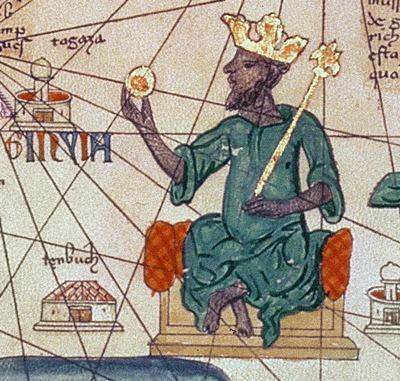 Detail from the Catalan Atlas, 1375 (vellum)
Detail from the Catalan Atlas, 1375 (vellum)The infographic does not go as far, but of course from the 15th century, accelerating into the 19th century, the richest people started to be industrialists and bankers financing new machines and infrastructures. And now, they are industrialists of the economy. Still their wealth is much less than the historical rulers mentioned in the infographic whose wealth could be up to 20% of world GDP – which shows that in a certain measure richer people are now much less proportionally rich than historical figures.
The other interesting transformation to note is that up to the 15th century, wealth was derived regionally and mostly within one’s borders. Then trade spread and fortunes were made on this basis. In the 20th century it started to become truly global, and now it is definitely mostly global for the richest people on earth. Thus the geographical basis of wealth has also significantly changed.
It is often interesting to take such as historical perspective to remind ourselves that what we observe today is the result of a long evolution. Wealth is now not an exclusive property of tyrannical rulers, or industrialists but the domain of businesspeople with global interests that move resolutely into the Collaborative Age.
The post How the Profile of the Richest People Has Changed Over History first appeared on The Fourth Revolution Blog.February 26, 2022
How We Need to Have a Threshold Space for Transformation
Charlene Li in her post ‘Why You Need Liminal Space for Seamless Change‘ reminds us that we need to have a threshold, or some kind of intermediate space, when changing.

In her case, “[her] son just graduated from college, and we wanted to create liminal space for him to celebrate what he accomplished and to prepare himself for the future.” To do that they took a long drive across the US.
““Liminal” comes from the Latin word meaning “threshold,” and it’s an unavoidable part of change. Unfortunately, many organizations view change as something to go through as fast as possible. But […] a more effective and disruptive way to change is to slow down and actually create the liminal space of in between. This also creates space mentally and emotionally to expand on possibilities and opportunities.”
I love this idea of the need of having such a threshold and take it a bit slow when going through a transformation, taking the time to achieve it in a safe and sound manner.
The post How We Need to Have a Threshold Space for Transformation first appeared on The Fourth Revolution Blog.February 24, 2022
How the Next Big Idea Doesn’t Need to Be Original or in a New Market
I love this blog post by Seth Godin ‘The next big idea‘ that reminds us that it does not need to be new not have no competition.

“There are two confusions. The first is that the next big idea must be fully original. The second is that it have no competition. This is almost never the case.”
It is true that many thriving enterprises have just reinvented a small part of a business model, or have built on existing industrial practices just changing one parameter. At the end of the day it depends on the client: “The future of all of these types of organizations isn’t based on a lack of customer choice. It’s based on customer traction.”
Seth Goding reminds us that “The hard part is showing up to lead.”, leading through to get perfect execution in the market that is being addressed.
Looking for an idea to create your company? Don’t necessarily look for original or to create a new market: that’s often too hard. Just execute better than others and get customers to love what you are doing.
The post How the Next Big Idea Doesn’t Need to Be Original or in a New Market first appeared on The Fourth Revolution Blog.February 22, 2022
How Intrapreneurs and Entrepreneurs Can Both Spark Innovation
This article ‘Leaving the cult of entrepreneurship: Intrapreneurs are the true drivers of innovation‘ takes position in the debate between intrapreneurs and entrepreneurs as sources of innovation. I don’t think it is as simple: it all depends what kind of innovation we address and we should not oppose the two categories.
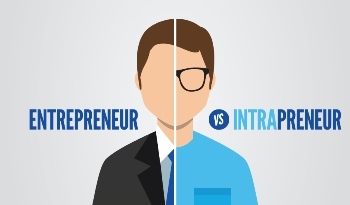
Intrapreneurs have the advantage of being able to mobilize considerables resources from their company to get their idea developed, once it is approved and recognized. Those means will dwarf those of the start-up entrepreneur, however one has to overcome the hurdles of internal approval and politics, and recognize the inevitable longer delays in getting things done in large organisations.
Independent entrepreneurs on their side will be more nimble, able to start on ideas without waiting for more approval than their friends and families’ dime. They can thus start on ideas that may be considered ridiculous by corporate committees. They can also often pivot more easily.
I thus think that intrapreneurs and entrepreneurs are both potential contributors to breakthrough innovation, and that frustrated intrapreneurs can also easily become entrepreneurs. They should not be opposed and both can certainly change the world.
The post How Intrapreneurs and Entrepreneurs Can Both Spark Innovation first appeared on The Fourth Revolution Blog.February 19, 2022
How Bionic Gloves Support a Professional Pianist to Play Again
This excellent article ‘How the Maestro Got His Hands Back‘ explain how world-renowned pianist João Carlos Martins got back the ability to play thanks to special gloves.

He was a prodigy and celebrated as a great pianist until he could not use his hands properly any more. He reinvented himself as a conductor at that stage. But still expecting to play piano, an admirer found a way by getting people to build special gloves for him.
“Then along came these bionic gloves, created by an industrial designer named Ubiratan Bizarro Costa, who became familiar with Martins’s problems after he saw the maestro on a Brazilian television show in 2019. There is nothing high-tech about the gloves Costa invented, which is how he prefers it. […] The gloves are both deceptively complicated looking and incredibly precise. The hand slips into a neoprene sleeve outfitted with a 3D-printed frame and stainless steel bars on the fingers. Costa, a fan of Formula One racing, was inspired by the cars’ rear suspension mechanism: When weight bears down on it, it springs back up. Without the gloves, when Martins’s fingers hit a key, they stay depressed; the steel bars pop them back up.“
Watch this moving extract on YouTube about his happiness to be able to play again.
Modern technology can improve significantly lives and overcome disabilities. The potential is limitless, even without excessive technological complication.
The post How Bionic Gloves Support a Professional Pianist to Play Again first appeared on The Fourth Revolution Blog.February 17, 2022
How to Explain the Trend Toward Sovereign Individuals and Entities
Have you heard about sovereign individuals announcing themselves to be above any state or country law? See for example this Forbes article ‘What is a Sovereign Citizen?‘, and a latest example at municipal level: ‘A California city council voted to make itself a ‘Constitutional Republic City’ to skirt state and federal orders it doesn’t want to enforce‘.

It has become a trend, inspired by individualism and often by anarchism thought about the fact that government is superfluous. “The short answer: a sovereign citizen is someone who believes that he or she is above all laws.” The longer answer: finding some basis to avoid applying some law or regulation you don’t like. People involved are often close to conspiracy theory and anarchistic movements.
Still, in the US, “The sovereign citizen movement is big and is growing fast, thanks to the Internet. There are an estimated 300,000 people in the movement, and approximately one third of these are what I would call hard-core believers – people willing to act on their beliefs rather than simply walk away.” It has become a concern and a trend, because it is so easy to declare oneself no obeying to certain laws you don’t like!
You can’t pick and choose the laws you are willing to obey and those you don’t. We all participate in a social construct and much of our wealth and peace is based on the addition of laws and regulations over the year. We also all belong to a country, a municipality. If we want to change something, in our democratic societies we can campaign for it. It is a bit easy to declare oneself a sovereign citizen to do as you like.
The post How to Explain the Trend Toward Sovereign Individuals and Entities first appeared on The Fourth Revolution Blog.February 15, 2022
How Glossolalia Is Related to Transe Proto-Language
Experiencing trance (see for example ‘How Trance Has Become a Scientific Experiment‘) leads to the experience of proto-language, supposedly some form of earlier language. During trance, we express ourselves in this way. I found out this is actually glossolalia, an age-old concept that has been observed in many situations since greek antiquity, and is also mentioned in Neal Stephenson’s excellent book ‘Snow Crash’ in the form of a virus infecting brains originating from the Sumerians.
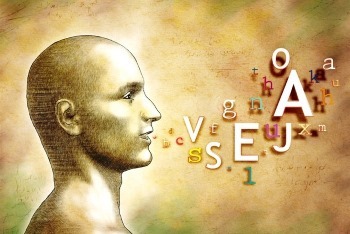
“Glossolalia is a practice in which people utter words or speech-like sounds, often thought by believers to be languages unknown to the speaker. One definition used by linguists is the fluid vocalizing of speech-like syllables that lack any readily comprehended meaning, in some cases as part of religious practice in which some believe it to be a divine language unknown to the speaker“
The interesting part is how widespread this practice is amongst religions and spiritual practices. It can be practiced. It has great benefits in that it can be used to convey feeling without saying awful words that are then remembered by other people, thus great to use in situations where you are angry and unhappy.
The fact that glossolalia is recognized across shamanism, Christianity and many other religions and situations shows that it is a constant capability of the human mind to speak a language, which could be an early or proto-language.
The post How Glossolalia Is Related to Transe Proto-Language first appeared on The Fourth Revolution Blog.February 12, 2022
How the Metaverse Term and Concept Was Created in a Novel in 1992
The metaverse term was invented by Neal Stephenson in his 1992 book ‘Snow Crash‘. I just read the book -highly recommended- and was astonished at how prescient it was, taking into account the fact it was published in 1992 and thus probably written in 1990 or 1991. At that time, the internet was quite in an infant stage.
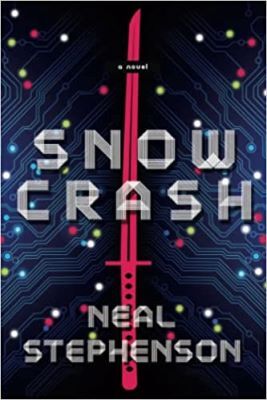
In the book we are propelled into some dreary future where the government authority has vanished and where people live both in reality and a virtual world called the metaverse. The hero is a hacker that participated to setting it up and can manage some of the deeper programs, providing him with an advantage in the metaverse. It is worth reading the book so I won’t tell the story.
Still, the amazing part is how the description of the metaverse is actual as per our current view (as is the description of glass-fiber and remote connections to the internet, together with the usage of googles to view the virtual world). Kudos to the author because I remember that time as discovering as I went to university, the capabilities of ftp to connect to an overseas computer, the very beginning of email and no idea of internet at all.
‘Snow Crash‘ is indeed a highly recommended read, not only because it is an excellent thriller, but also to appreciate how authors can be prescient about future concepts and services. In this case, up to inventing the term ‘metaverse’.
The post How the Metaverse Term and Concept Was Created in a Novel in 1992 first appeared on The Fourth Revolution Blog.


